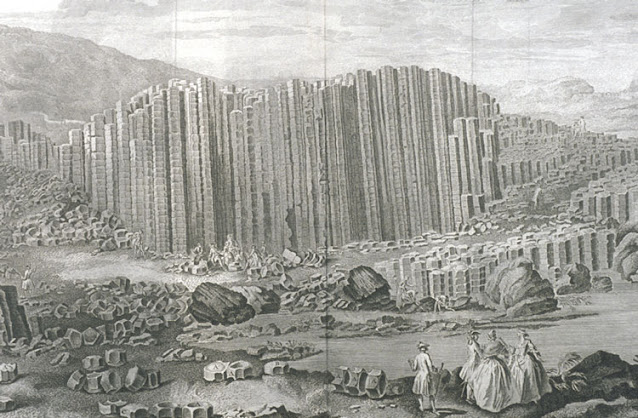Originally developed
to meet the needs of biologists, the technique of conservation called
freeze-drying - technically known as 'lyophilisation' – was for a long time
confined to research labs specializing in pharmaceuticals. It was only after
the First World War that it was applied on a large scale to the preservation of
everyday foodstuffs.
In 1811 the Scottish
mathematician and physicist John Leslie was the first person to change water
vapor into ice directly-that is, without passing through a liquid stage in
between. Two years later the chemist William Wollaston demonstrated the same
process to the Royal Society in London. It did not occur to either of them that
this effect might one day be used for the preservation of food.
Almost a century
later, on 22 October 1906, Arsène d’Arsonval presented a research paper to the
Academy of Sciences in Paris entitled 'On distillation and desiccation in a
vacuum by means of low temperatures'. Written with the help of an assistant, F
Bordas, in the biophysics laboratory that D'Arsonval ran, the paper addressed the subject.
That was preoccupying many biologists at the time: how to preserve
samples of tissue, serum, germs, and other substances used in research.
D’Arsonval had devised a technique of freeze-drying. Three years later an
American, Leon Shackell, rediscovered the process and developed it.
Stages in The Process
Freeze-drying involves
three stages. First, the sample is frozen solid. Second, it is subjected to
sublimation – a process that transforms a solid into a vapor without going
through a liquid phase. By this stage, the sample has lost most of its water
through evaporation, with no heat involved. Finally, to rid the sample of any
residual water, it undergoes a secondary desiccation process, in which the
temperature is raised slightly, although still usually staying below zero.
The end product is
almost totally dehydrated but retains structure and color. Crucially, many of
the biological functions recover once the sample is rehydrated since
freeze-drying does not damage the molecular structure or cell tissue. Neither
ordinary drying nor freezing alone produce such a satisfactory result.
Impact of the War
Because of its cost
and complexity, freeze-drying was long restricted to scientific laboratories.
This changed in the 1930s. With another world war looming, there was an urgent
need to be able to stockpile large, transportable quantities of blood plasma
for transfusions to casualties.
From 1935, the
American Earl W Flosdorf published the results of his efforts to freeze-dry
human blood serum and plasma for clinical use. The desiccation of blood plasma
from a frozen state, performed by the American Red Cross for the US armed
forces, was the first extensive use of freeze-drying.
Flosdorf, together
with researchers in Britain under Ronald Greaves, pioneered large-scale
commercial freeze-drying of foodstuffs at this time. Meanwhile, Ernst Boris
Chain, the co-discoverer of penicillin, initiated the lyophilisation of
antibiotics and other sensitive biochemical products.
From Drugs to
Freeze-dried Coffee
At the end of the war,
the pharmaceutical and cosmetics industries adopted freeze-drying for vaccines,
drugs, and other preparations. Freeze-dried coffee, which had been brought to
Europe by American GIs, helped to stimulate the freeze-drying of foods.
At first, because the
process was still very costly, it was only used for luxury items. But before
long freeze-dried soups, spices and even entire prepared meals appeared in
packets on grocers’ shelves. In the 1960s NASA adopted freeze-dried meals for
astronauts on its space programmed.
PROS AND CONS
Most micro-organisms
need water to survive and grow; provide almost the same nutritional value as
fresh versions. The main freeze-drying is very effective at the disadvantage of
freeze-drying is it preventing the growth of microbes and inhibiting harmful
chemical relatively high cost, which has hampered the full development of the
technique even to the present day. reactions.
The use of
freeze-dried products in the Second World War Also, while freeze-drying
commodities demonstrated the huge benefits, they such as coffee and tea, which
have no offer in storage and distribution. If cell structure, is successful and
cost-effective, other products do not fare so well.
It is especially hard
to properly freeze-dried, most foods, either raw or cooked, have a long shelf
life even at room temperature sublimate all the water vapor from foods with
abundant cell membranes and can be reconstituted simply by adding water; the
resulting in products like meat, vegetables, and fruit.
INCA KNOW-HOW
Father José d'Acosta,
a Spanish Jesuit priest I on a mission in Peru, reported in 1591 that the Incas
conserved food crops by carrying them up into the Andes above Machu Picchu.
There, the combined effects of the cold, the Sun, and the relatively low
atmospheric pressure at high altitudes caused the water in the food to
sublimate. The resulting products, which the Incas called charqui (dried meat)
or chuno (dried potatoes), were the earliest known freeze-dried foods.















